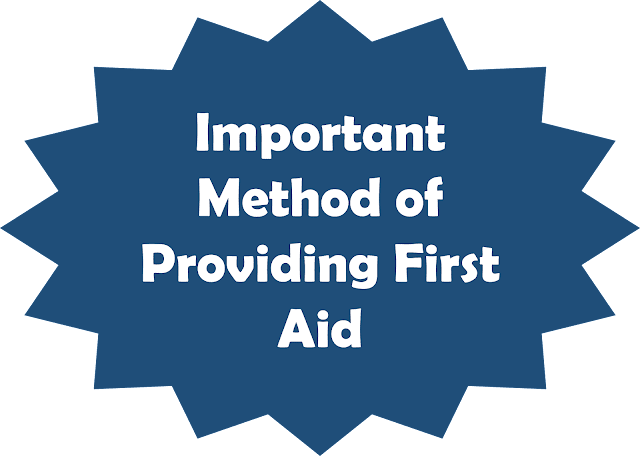3 Important Method of Providing First Aid - Helptipsfree
3 Important
Method of Providing First Aid - Helptipsfree
Method
of Providing First Aid: Extended
medical services
Handling unconscious victims.
An unconscious victim is handled as under slightly to open
the airway. Place the arm nearest you by his side. Lift him bottom and place
the hand underneath, palm up with fingers straight.
Slightly raise the furthest leg at the heel. Then bring it
towards you and cross it over the other leg. Bring the patient arm up and lay
it cross the front of his chest, in such as way that the hand is pointing
towards patient’s opposite shoulder.
Still supporting his body, readjust his head to ensure his
airways open. Bend the upper most arm and leg to prevent him rolling on to his
face. Carefully pull victim’s other arm out, working from shoulder down, and
leave it lying parallel to his body.
Method
of Providing First Aid: Mouth-to-Mouth Ventilation
If a patient has stopped breathing you must use artificial
ventilation to get air into his lungs as soon as possible. The most efficient
way of ding this is to blow air from your own lungs into his. Illustrates step
by step procedure for mouth to mouth ventilation. The method of mouth to mouth
ventilation is described as under:
Open the patient’s air way
‘Keep his head well back, with jaw lifted and mouth open
pinch his nostrils shut with the fingers and thumb of one hand.
Take a deep breath, open your mouth wide and seal your lips
round the patient’s mouth; blow gently but firmly into his mouth; blow in
enough air to make his chest rise.
Lift your mouth away. Watch the patient’s chest; you should
see it falling as the air comes out.
Repeat the process once more. If there is still no response,
patient’s air way must be blocked and you must treat for choking.
After two successful inflations, check the pulse to see if
the heart is beating. IF the heart is not beating, begin external chest
compression immediately.
When the patient is breathing independently again, place him
in the recovery position but do not leave him alone.
If you can feel your patient’s pulse, and so know his heart
beating, continue giving mouth to mouth ventilation.
Method
of Providing First Aid: External Chest Compression
As already mentioned, external chest compression involves
pressing on the lower half of the breastbone to pump blood out of the heart and
round the body. Illustrate the procedure for chest compression and mouth to
mouth ventilation. The following steps are followed for both of the above
functions:
Lay the patient flat on the ground and kneel beside him,
facing his chest. Find hole point where the end of his ribs meets in the
middle; this is the bottom of the breastbone.
Place the heel of the hand along the line of the breastbone,
two finger width above the middle point. Make sure you keep your fingers off
the ribs.
Cover your hand with the heel of your other hand and look
you finger together. Kneel upright so your arms are straight.
Keeping your arm straight, press down 4-5 centimeters then
release pressure but do not remove your hands. Do fifteen compressions at a
rate of eight per minute. Avoid jerky and stabbing compressions.
After fifteen compressions, move back the patient’s head to
reopen his air way and give two more breaths. Continue giving fifteen heart
compressions followed by two breaths. Check for the pulse after one minute and
then every three minutes.
Stop the compression as soon as the patient’s pulse returns.
Continue mouth to mouth ventilation until the patient is breathing
independently.







